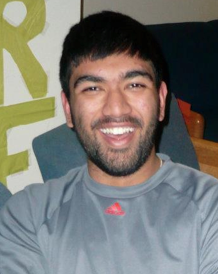2015
Neuroscience and Behavior
Description:
Examining Pathways for the Regulation of Macrophage Phenotype
Macrophages exist in two different phenotypes, classically activated (M1) and alternatively activated (M2). M1 macrophages respond to acute infections while M2 macrophages affect parasites and wound healing. Treatment with cytokines and danger signals polarizes bone marrow derived macrophages (BMMs) into M1 and M2. M1 activation results from treatment with 100 nM lipopolysaccharide (LPS) and 10 units of interferon gamma (Ifn-γ) per mL. M2 activation results from treatment with (concentration) interleukin 4 (IL-4). Differences between macrophages are detectable through examination of nitric oxide (NO). In M1 macrophages, arginine metabolism gives rise to high levels of inducible nitric oxide synthase (iNOS; NOS2), thereby producing NO as toxic intermediates for its activity. M2 macrophages express an activation of the arginase pathway with subsequent production of ornithine and polyamines, therefore suppressing NO secretion. M1 macrophages will express iNOS mRNA and produce measurable levels of NO, while M2 should express arginase and lower levels of NO. With traditional pathways clearly defined, future work will focus on alternative methods of activation and phenotype polarization, as well as examining macrophage plasticity. A possible pathway for phenotype switching is a NO feedback loop affecting the phenotype of macrophages in M1 heavy areas. NO released by M1 macrophages may switch macrophages into M2 through negative feedback.
Photo:
